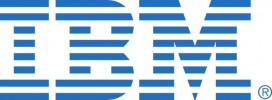The Stages and Risk of Data Vulnerability 10 Jul 2021
Did you know your corporation’s data is at more or less risk depending on where it is in its lifecycle? Therefore, it is essential that your company has the correct methods in place to protect your data at each and every stage of its life.
The latest data destruction software can help lower data leaks, identity theft and other security risks (WhiteCanyon). To help you understand your data vulnerability risk, read on to find out more about the different stages at which your information may be exposed.
At Network Level
Your company’s data can be at risk from hackers at a network level through ports of unauthorised access. Any use that is obtained without receiving permission to an organisation’s networks, data, endpoints, applications or devices is referred to as unauthorised access. And, unfortunately, laptops and unsecured mobile devices provide a possible weak point to your network.
Other risks can include Ethernet ports as these can be used to tap directly into your network’s resources, as well as wireless access points and other digital assets. These means can exploit your network’s vulnerabilities, while an unsupervised individual in a server room can put your data at significant risk (WhiteCanyon).
Similar threats to your network include a bring-your-own-device (BYOD) policy. There are increased security risks when access is granted to employees to access the company’s network from a personal device, such as mobile phones, laptops, or tablets.
When remote working needed to be implemented and quick during the pandemic, BYOD seemed to answer most company’s problems. However, from a data protection perspective, this has instead opened the door to more problems.
However, setting up a Unified Threat Management (UTM) can secure your firewalls and routers. In addition, patch updates and security inspections can help ensure your security systems are constantly up-to-date, reducing the likelihood of malicious attacks. If your company needs to establish a private network connection over public networks, we recommend using a Virtual Private Network (VPN) to help protect your data further.
At System Level
In addition to protecting your network, your business’s system must also be considered. Experienced hackers can exploit your system at various different stages. Everything from email phishing to someone watching you enter a password during login is included as an example of system-level data vulnerability. You may not realise that programs such as Adobe Reader, Adobe Flash, and Oracle Java can also present system-level vulnerabilities. These security risks are similar to those that can occur from unsecured cloud storage systems.
One way to improve your level of security at a system level is by monitoring hardware assets, such as computer servers and routers. Your company can set up online monitoring tools to help provide your software monitoring solutions; however, another option is outsourcing this service to a specialist.
At Global EMEA, we offer managed IT services which include monitoring and increasing your performance and security. With software support, along with network and system monitoring, you can rest assured that our team will be dedicated to keeping your IT system up-to-date and protected. For more information, visit our web page today.
Additional ways to increase your system’s security is by backing up your data in different physical locations. Similarly, keeping on top of all system updates and maintenance can improve your systems safety as well as its reliability.
At Data Level
When it comes to securing your company at a data level, there are many vulnerabilities you must take into account. Unsecured mobile devices, cloud storage applications, and third-party service provider systems are just the tip of the iceberg! In addition, any data that is in storage or motion is vulnerable; however, if you have the right security measures in place, you can keep your data safe.
In order to reduce the risks, measures such as data encryption to address threats from outside and inside your network must be realistically considered. Sensitive documents should be protected with role-based access control, while an effective data erasure strategy can protect sensitive information about your company, assets, employees, clients, and customers (WhiteCanyon).
Maximising your Data Protection
Arguably, the most efficient way to protect your company’s information is through data sanitisation. By permanently erasing information prevents unwanted entities from gaining access to your sensitive data. Therefore, one way to maximise your data protection is by deleting confidential information, client’s personal data, browsing history, cookies and storage assets on all unused media.
Using our partner’s WipeDrive Enterprise Software, you can remotely wipe data, permanently erasing all traces from hard drives, SSDs, remote devices, and removable media. With its Military of Defence level of wiping patterns, WipeDrive complies with a range of national and international regulatory and technical standards.
For more details about our data destruction software and to find out more about WipeDrive, contact us today on 0345 340 3105 or fill out the enquiry form on our website here.








